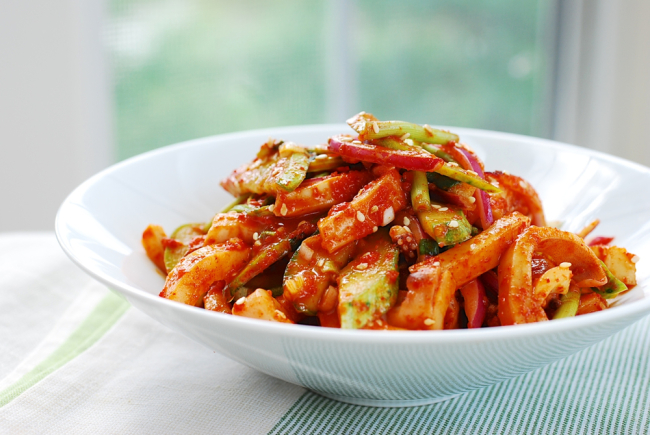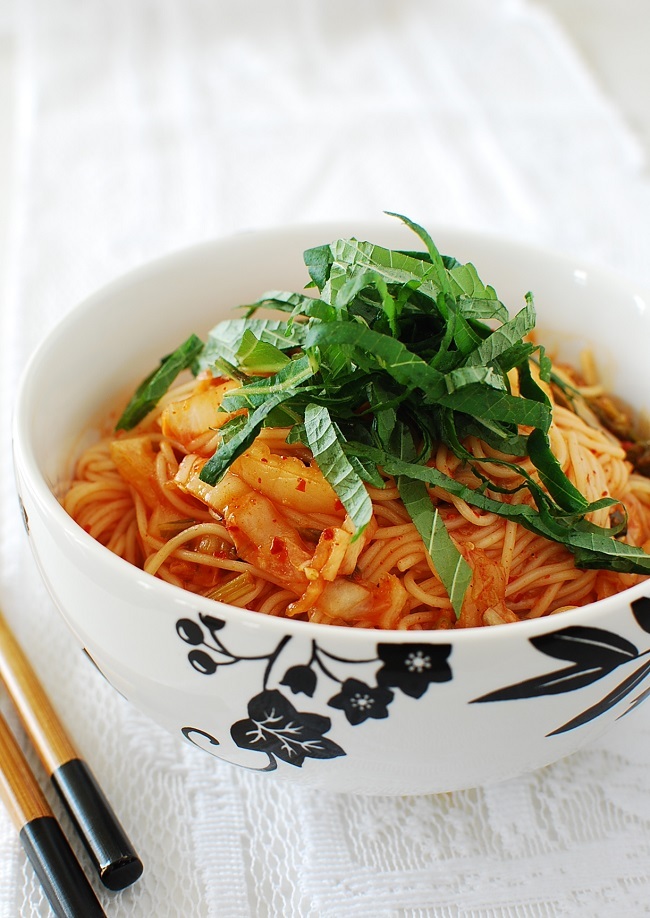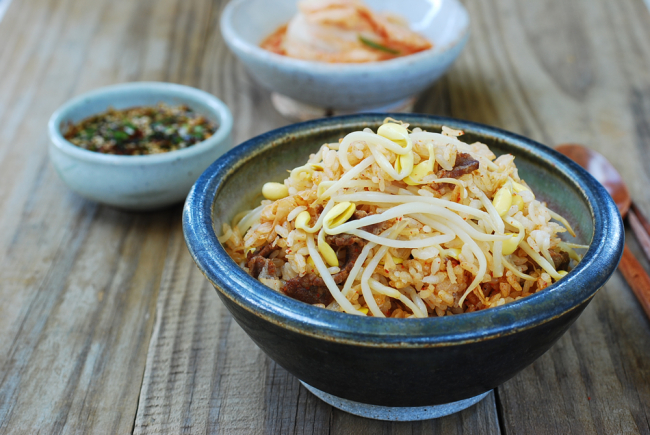Updated : 2014-10-17 20:49
 |
| Hobakjuk (pumpkin porridge) (Korean Bapsang) |
6―8 servings
Ingredients:
● 1 danhobak (kabocha), about 900 grams
● 1/2 cup sweet rice (aka glutinous rice), soaked in water for at least an hour
● 1/2 teaspoon salt
● 2 tablespoons brown sugar (adjust to your liking)
● 1/4 cup red beans (pat), soaked and boiled (optional)
Cut the squash into halves (or quarters). Remove the seeds. Place them in a large pot, cut side up. Add water about one-third up the squash, about 6 cups. Cover and boil over medium heat until the squash turns tender, about 25-30 minutes. Discard the water.
When the squash is cool enough to handle, scoop out the flesh (or peel the skin off).
Mash the squash with a spoon or potato masher, or puree it in a blender (use some of the 3 cups of water required below).
In a blender, grind the soaked glutinous rice with 1 cup of water as finely as possible.
Pour the ground sweet rice into the pot of prepared squash. Add 3 cups of water. Cook over medium heat, stirring and mashing any remaining chunks of squash, until the rice starts to turn translucent and the porridge becomes thick. Cover, and reduce the heat to low. Continue to simmer, stirring occasionally, for about 20 minutes. (Adjust the consistency of the porridge to your taste by adding more water.)
Stir in the salt, sugar and optional cooked red beans. Cook for an additional 3-4 minutes.






